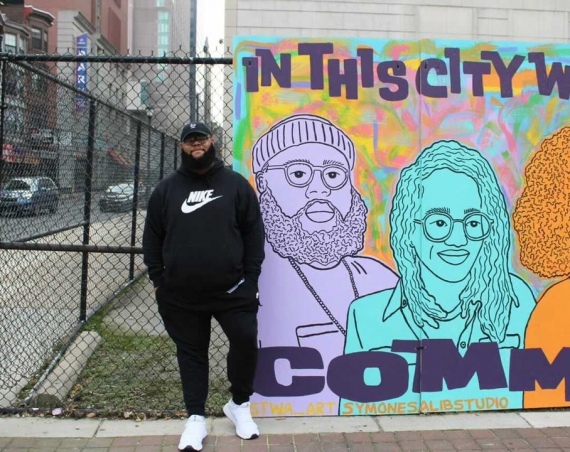
Every time a Starbucks replaces a small neighborhood store, somewhere, a dandelion growing out of a cracked sidewalk dies.
I’ve been thinking a lot about how much Philly has changed. It’s hard not to when almost every time I’m outside in any familiar part of the city, I can barely recognize where I am. Although I enjoy some of the new amenities, like I’m sure most natives do: concert venues, new eateries, late-night drinks, clean streets…there’s part of me that misses some of the grit and grime of the city.
The more sterile and modern it looks, the more closed off it feels. I don’t think I’m alone in wanting home to feel like home, even when it’s made “better.” I want it to feel like the small red-bricked row-homed block I grew up on. I worry about the direction of the city, redesign being all tech, plywood, beefed-up law enforcement, and no soul. Mostly I’m concerned that all this effort and change isn’t for anybody in any neighborhood I know.
I miss the place that was home to hair braiders, warehouse workers, and bus drivers more than anybody else, and felt like it. I miss the avenues lined with stores one after the other, displaying their everyday and cultural items on the sidewalk outside, with each store wafting its own pungent scent of incense or oils or spices or flowers. I miss people blasting Frankie Beverly & Maze, The Whispers, and The O’Jays on Sundays, 90’s hip hop and dancehall at cookouts, and State Property for summers on end. I miss the sound of a city that was the soundtrack to my young life.
Meanwhile, every few months, an affordable housing complex is leveled for another research center. Blocks of new gray units and stale blue construction with ridiculously placed garages have popped up everywhere – money and labor that could have easily been new roofs and repaired porches for existing residents or pothole-free streets for our neighborhoods. Instead, blocks and communities are now devoid of sound, scents, and memory.
I remember streets with half-abandoned row homes and blocks half demolished with lots wide enough for you to see Center City’s skyline from almost any corner. I remember when the streets were filled with neighbors and laughter and kids playing and so much joy – as a kid, I didn’t even realize this was poverty because people made the best of what they had and what was in front of them.
We were a community. I miss the people and all the noise, mess, love, and liveliness that came with them. I don’t want the small traces of Philly to vanish from every corner of this city with every swipe of a white paintbrush over a graffitied wall, with every shuttering of an artists’ hub and venue, with every demolished grandmother’s and auntie’s home.
After a decade, Germantown High School still stands vacant. An entire school building that could have continued to be a source of education for neighborhood kids, was left in ruins and then sold for a fraction of its worth. Even if the School District had financial or other reasons for closing the school, I can imagine the positive impact on our neighborhood if we were allowed to have it as a multipurpose community space for returning citizens, youth recreation, arts programming, housing, and more for all these years.
How did Germantown residents benefit from having their neighborhood school left abandoned and neglected? I guess in the same way that it makes more sense for restaurants to throw out thousands of pounds of food nightly than to give it to starving people in the streets, it makes more sense to leave an entire school building vacant rather than to repurpose it for community needs.
If communities must change, let it be for the better, for those who have been here, so that all those from far and wide who come here to be our neighbors can become a loving part of a rich, existing history. Let real remembrance, respect, and regard for all that the community was and is continue to be a part of what it will be. If boxy, plywood-lined blocks must be our future, then let opportunistic developers make their offerings in earnest to the neighborhood. Instead of knocking down our community spaces to serve strangers who transplant themselves here, it would be just as easy to build upon the space in a way that will enrich those who have lived and loved here.
Creating spaces for joy, hosting parties and gatherings for Philly children to play and learn and dance unbothered and unafraid– that’s a far more worthwhile form of neighborhood development.
—

Eboni Zamani is a Black Philly multimedia artist who uses film, photography, and writing. Her photo booth company, EZ Exposures, is a part of Cohort #3 of Goldman Sachs’ One Million Black Women Initiative. She’s a BPM+ Fellow with Black Public Media.



